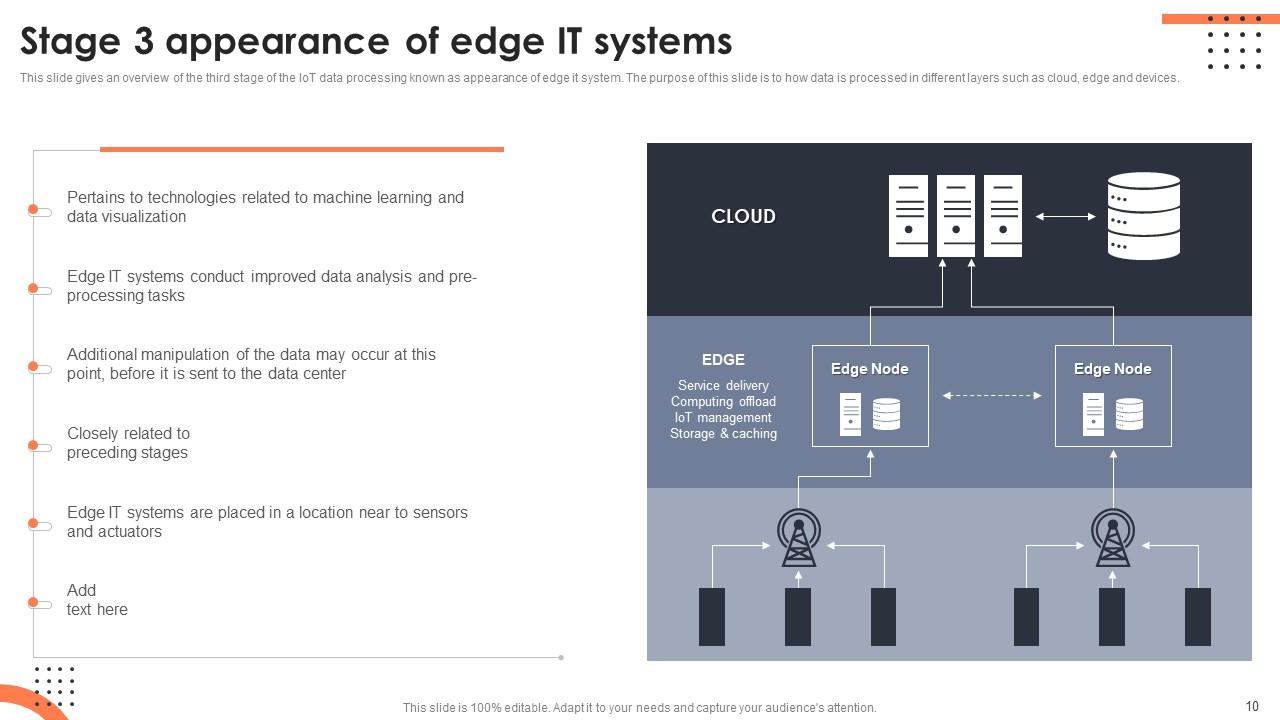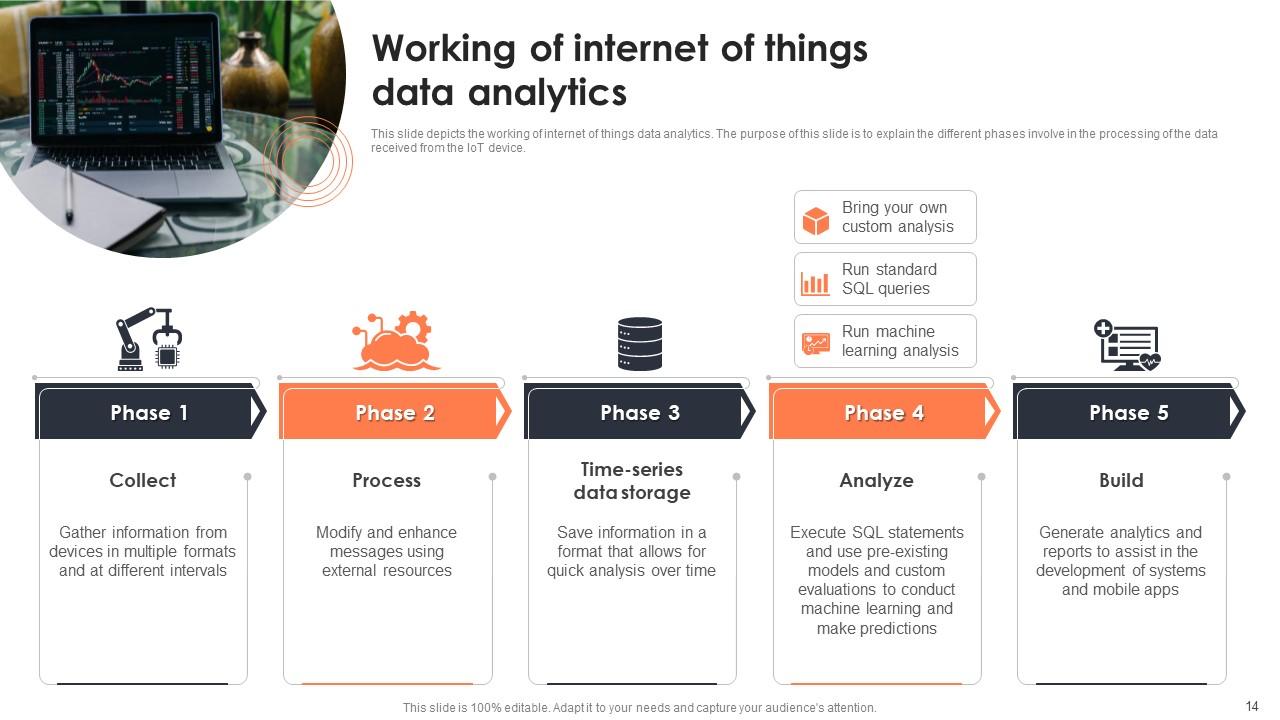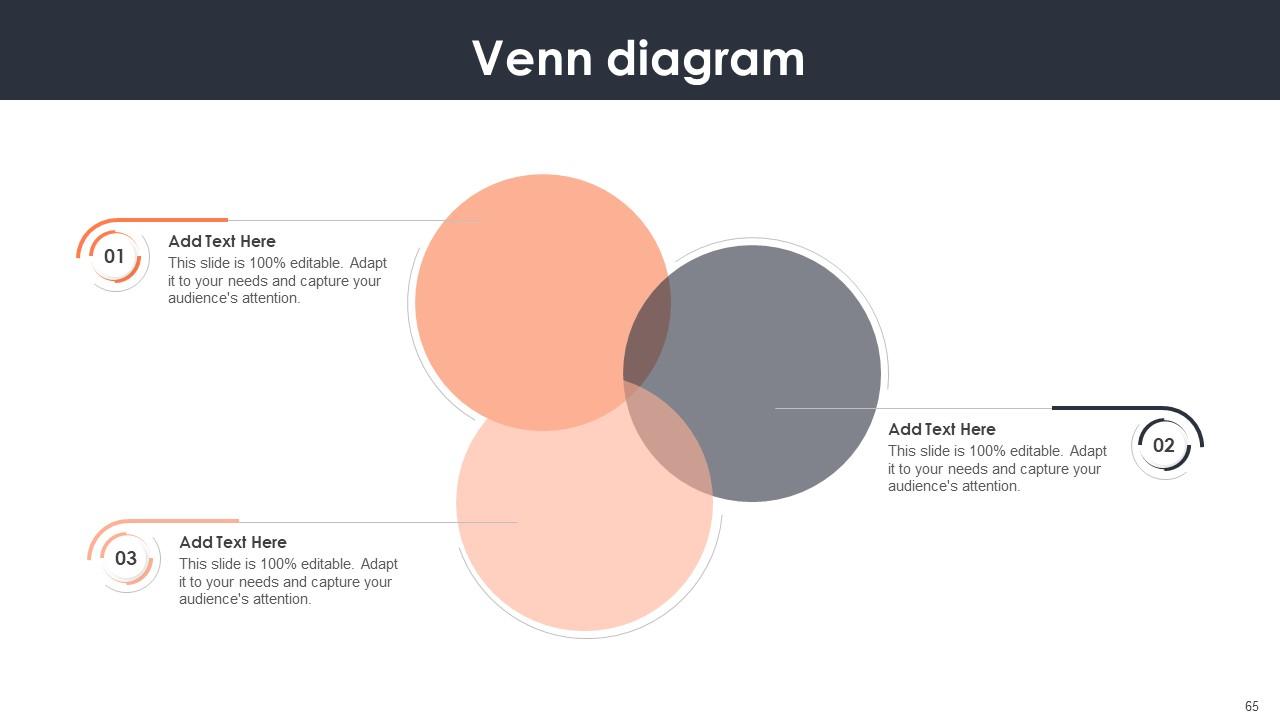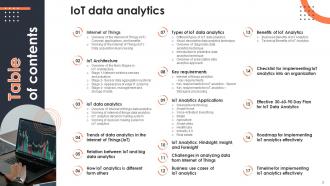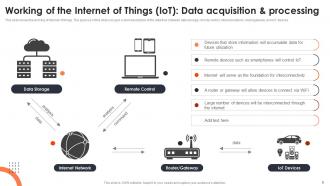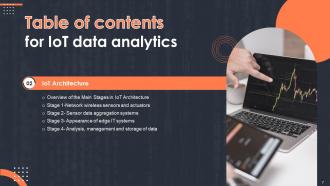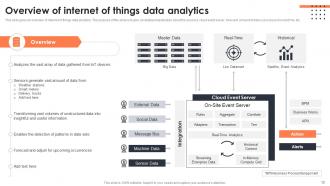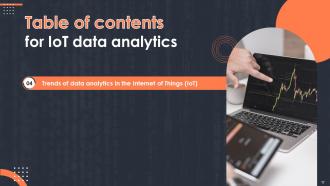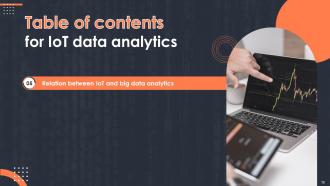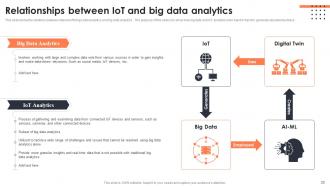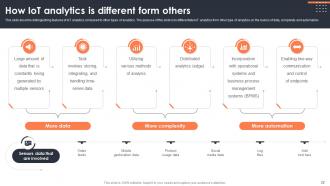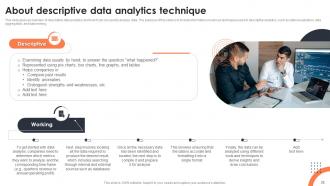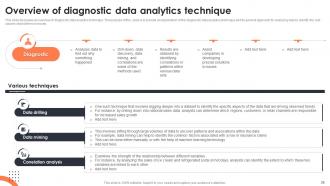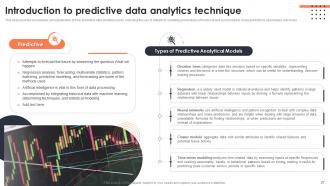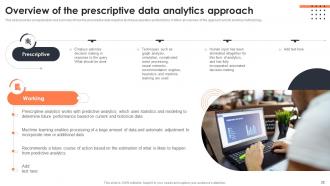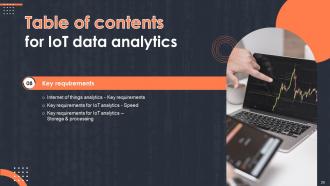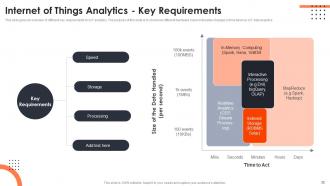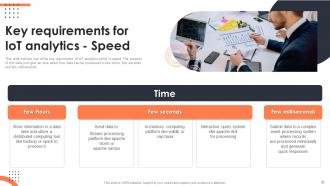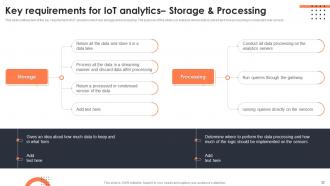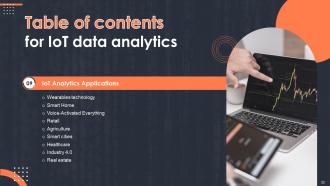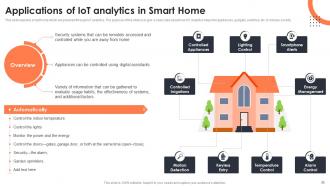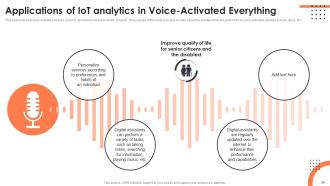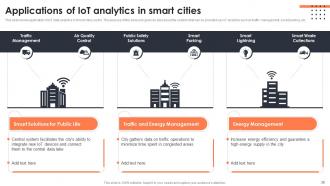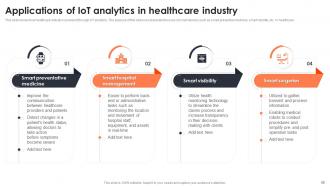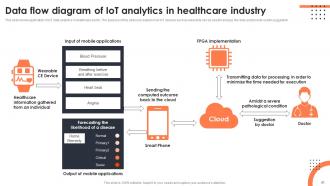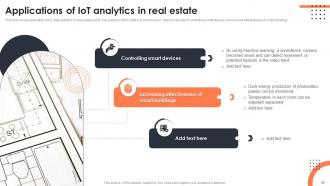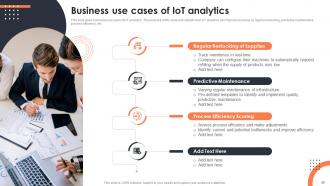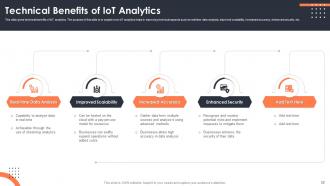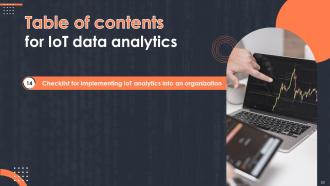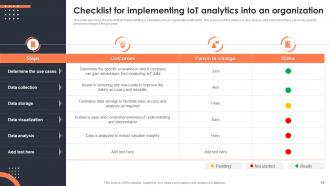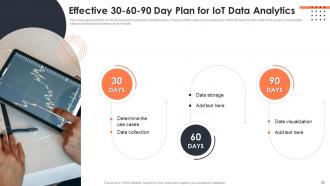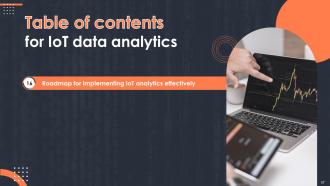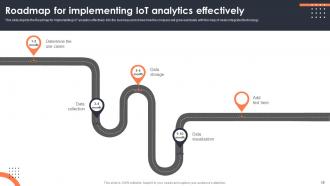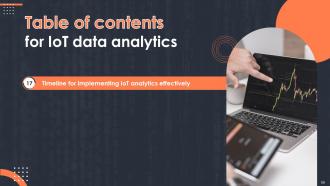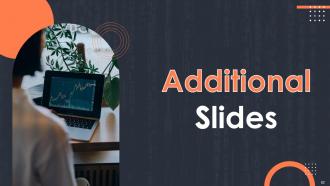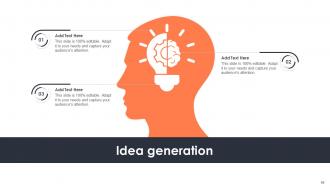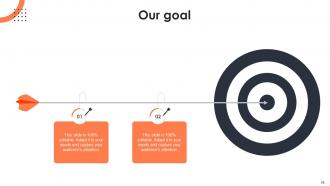Iot Data Analytics Powerpoint Presentation Slides
IoT data analytics refers to collecting, processing, and analyzing data generated by IoT devices to extract insights and enable informed decision-making. This comprehensive IoT data analytics PowerPoint presentation encompasses various types of IoT data analytics, including descriptive, predictive, and prescriptive analytics. Firstly, the Internet of Things IoT PPT deck describes analytics tools and platforms that must handle large volumes of IoT-generated data and adapt to evolving business needs. Real-time processing enables timely decision-making, and robust data security protects sensitive information. Moreover, the Real-time Analytics PPT module displays IoT analytics in diverse industrial applications. The diversity of data sources and formats requires integration and standardization for effective analysis. Lastly, the Predictive Analytics PPT deck describes the potential to unlock valuable insights and drive innovation across industries. To harness this potential, organizations need the right tools, platforms, and processes to effectively collect, process, and analyze IoT data while addressing associated challenges. Download our fully editable and customizable template, compatible with Google Slides, to explore these concepts in depth and enhance your understanding of IoT data analytics.
You must be logged in to download this presentation.
 Impress your
Impress your audience
Editable
of Time
PowerPoint presentation slides
This complete deck covers various topics and highlights important concepts. It has PPT slides which cater to your business needs. This complete deck presentation emphasizes Iot Data Analytics Powerpoint Presentation Slides and has templates with professional background images and relevant content. This deck consists of total of sixty seven slides. Our designers have created customizable templates, keeping your convenience in mind. You can edit the color, text and font size with ease. Not just this, you can also add or delete the content if needed. Get access to this fully editable complete presentation by clicking the download button below.
People who downloaded this PowerPoint presentation also viewed the following :
Content of this Powerpoint Presentation
Slide 1: This slide introduces IoT Data Analytics. State your company name and begin.
Slide 2: This is an Agenda slide. State your agendas here.
Slide 3: This slide shows Table of Content for the presentation.
Slide 4: This slide shows title for topics that are to be covered next in the template.
Slide 5: This slide presents an overview of internet of things.
Slide 6: This slide describes the working of internet of things.
Slide 7: This slide shows title for topics that are to be covered next in the template.
Slide 8: This slide presents an overview of the first stage of the data processing known as network wireless sensor and actuators.
Slide 9: This slide gives an overview of the second stage of the IoT data processing known as sensor data aggregation system.
Slide 10: This slide describes the third stage of the IoT data processing known as appearance of edge it system.
Slide 11: This slide presents the fourth stage of the IoT data processing.
Slide 12: This slide shows title for topics that are to be covered next in the template.
Slide 13: This slide gives an overview of internet of things data analytics.
Slide 14: This slide depicts the working of internet of things data analytics.
Slide 15: This slide presents an overview of internet of things decision making system.
Slide 16: This slide describes the working of decision making system in IoT analytics.
Slide 17: This slide shows title for topics that are to be covered next in the template.
Slide 18: This slide explains the role of internet of things data analytics.
Slide 19: This slide shows title for topics that are to be covered next in the template.
Slide 20: This slide derive the relations between internet of things data analytics and big data analytics.
Slide 21: This slide shows title for topics that are to be covered next in the template.
Slide 22: This slide describe distinguishing features of IoT analytics compared to other types of analytics.
Slide 23: This slide shows title for topics that are to be covered next in the template.
Slide 24: This slide highlight different types of IoT data analytics.
Slide 25: This slide gives an overview of descriptive data analytics and how it can be used to analyze data.
Slide 26: This slide discusses an overview of diagnostic data analytics technique.
Slide 27: This slide provides an overview and explanation of how predictive data analytics works.
Slide 28: This slide presents an explanation and summary of how the prescriptive data analytics technique operates and functions.
Slide 29: This slide shows title for topics that are to be covered next in the template.
Slide 30: This slide gives an overview of different key requirements for IoT analytics.
Slide 31: This slide outlines one of the key requirement of IoT analytics which is speed.
Slide 32: This slide describes two of the key requirement of IoT analytics which are storage and processing.
Slide 33: This slide shows title for topics that are to be covered next in the template.
Slide 34: This slide explains wearables which are powered through IoT analytics.
Slide 35: This slide explains smart home which are powered through IoT analytics.
Slide 36: This slide describes how voice-activated devices uses IoT analytics to assist in variety of tasks.
Slide 37: This slide shows application of IoT data analytics in retail sector.
Slide 38: This slide presents application of IoT data analytics in agriculture sector.
Slide 39: This slide displays application of IoT data analytics in Smart cities sector.
Slide 40: This slide describes how healthcare industry is powered through IoT analytics.
Slide 41: This slide shows application of IoT data analytics in healthcare sector.
Slide 42: This slide presents application of IoT data analytics in industry 4.0 sector.
Slide 43: This slide shows application of IoT data analytics in real-estate sector.
Slide 44: This slide shows title for topics that are to be covered next in the template.
Slide 45: This slide outlines Hindsight, Insight, and Foresight of internet of things data analytics.
Slide 46: This slide shows title for topics that are to be covered next in the template.
Slide 47: This slide depicts the challenges in analyzing data from internet of things.
Slide 48: This slide shows title for topics that are to be covered next in the template.
Slide 49: This slide describes business use cases of IoT analytics.
Slide 50: This slide shows title for topics that are to be covered next in the template.
Slide 51: This slide gives benefits of using IoT analytics in business.
Slide 52: This slide presents technical benefits of IoT analytics.
Slide 53: This slide shows title for topics that are to be covered next in the template.
Slide 54: This slide describes the checklist for implementing IoT analytics into an organization efficiently.
Slide 55: This slide shows title for topics that are to be covered next in the template.
Slide 56: This slide represents the 30-60-90 day plan for integrating data analytics.
Slide 57: This slide shows title for topics that are to be covered next in the template.
Slide 58: This slide depicts the Roadmap for implementing IoT analytics effectively into the business.
Slide 59: This slide shows title for topics that are to be covered next in the template.
Slide 60: This slide shows the timeline for implementing IoT analytics effectively in an organization and the tasks to be performed.
Slide 61: This slide shows all the icons included in the presentation.
Slide 62: This slide is titled as Additional Slides for moving forward.
Slide 63: This slide contains Puzzle with related icons and text.
Slide 64: This is an Idea Generation slide to state a new idea or highlight information, specifications etc.
Slide 65: This slide depicts Venn diagram with text boxes.
Slide 66: This is Our Goal slide. State your firm's goals here.
Slide 67: This is a Thank You slide with address, contact numbers and email address.
Iot Data Analytics Powerpoint Presentation Slides with all 72 slides:
Use our Iot Data Analytics Powerpoint Presentation Slides to effectively help you save your valuable time. They are readymade to fit into any presentation structure.
FAQs
The Internet of Things (IoT) refers to a network of interconnected physical devices, vehicles, appliances, and other objects that are embedded with sensors, software, and network connectivity. These devices collect and exchange data, enabling them to communicate and interact with each other and perform various tasks autonomously.
The stages of data processing in IoT include network wireless sensors and actuators, sensor data aggregation system, the appearance of edge IT system, and the final stage of data processing. These stages involve collecting data from sensors, aggregating and analyzing the data, and making decisions based on the insights gained.
IoT data analytics involves collecting and analyzing the vast amounts of data generated by IoT devices. It typically includes descriptive analytics (summarizing and visualizing data), diagnostic analytics (identifying patterns and causes), predictive analytics (forecasting future events), and prescriptive analytics (providing recommendations and decision-making support).
The key requirements for IoT analytics include speed (real-time or near-real-time processing), storage and processing capabilities (to handle large volumes of data), data security and privacy, scalability, and interoperability to integrate with various IoT devices and systems.
IoT data analytics has various applications across industries. It is used in wearables for fitness tracking and health monitoring, in smart homes for automation and energy management, in voice-activated devices for virtual assistants, in retail for personalized marketing and inventory management, in agriculture for precision farming, in healthcare for remote patient monitoring, and in industry 4.0 for predictive maintenance and optimization. These applications leverage IoT data analytics to gain insights and improve decision-making processes.
-
“Thanks to SlideTeam. Now I can make smart presentations in a fraction of time without any hassle.”
-
The service is fast, and I could access any presentation after buying the subscription. I don’t think I’ll ever have to worry about a presentation in my life.












